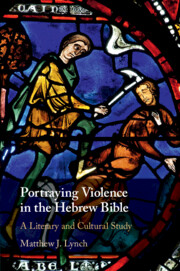Book contents
- Portraying Violence in the Hebrew Bible
- Portraying Violence in the Hebrew Bible
- Copyright page
- Publisher’s note
- Dedication
- Contents
- Acknowledgements
- Abbreviations
- Introduction
- Part I Violence and Ecology
- Part II Violence and Moral Speech
- Part III Violence and Justice
- Part IV Violence and Impurity
- Conclusion
- Appendix
- Bibliography
- Index
Introduction
Published online by Cambridge University Press: 06 May 2020
- Portraying Violence in the Hebrew Bible
- Portraying Violence in the Hebrew Bible
- Copyright page
- Publisher’s note
- Dedication
- Contents
- Acknowledgements
- Abbreviations
- Introduction
- Part I Violence and Ecology
- Part II Violence and Moral Speech
- Part III Violence and Justice
- Part IV Violence and Impurity
- Conclusion
- Appendix
- Bibliography
- Index
Summary
How we think about violence has changed throughout time. Consider the category ‘domestic violence’. In Colonial America the horrors of wife-beating were categorized as ‘wife-disciplining’. With the exception of Puritan law, corporal discipline of one’s spouse was, tragically, considered a legitimate means by which a husband exercised his authority and ‘chastised’ his wife.1 The application of the term ‘violence’, with its negatively charged overtones, to the act of ‘wife-disciplining’ would have been considered a confusion of categories for many husbands. Americans considered wife-disciplining to be part of the husband’s legitimate ‘regime of mastery’ that he exercised over his wife. Corporal punishment was his prerogative.2 Heather Duerre Humann points out that even with the eventual criminalization of spousal abuse the conceptual category ‘domestic violence’ hardly received mention in literature on the family and the ‘theorization of the family’ until the 1980s.3 In early America, even after tort reform, beating one’s wife fell into the category of illicit forms of wife-disciplining, and not into a super-category called violence. The category ‘domestic violence’ eventually followed the reduction of the category ‘disciplining’ (and ‘correcting’ or ‘chastising’) and many years later the expansion of violence into a category that included beating one’s wife.4
- Type
- Chapter
- Information
- Portraying Violence in the Hebrew BibleA Literary and Cultural Study, pp. 1 - 14Publisher: Cambridge University PressPrint publication year: 2020



